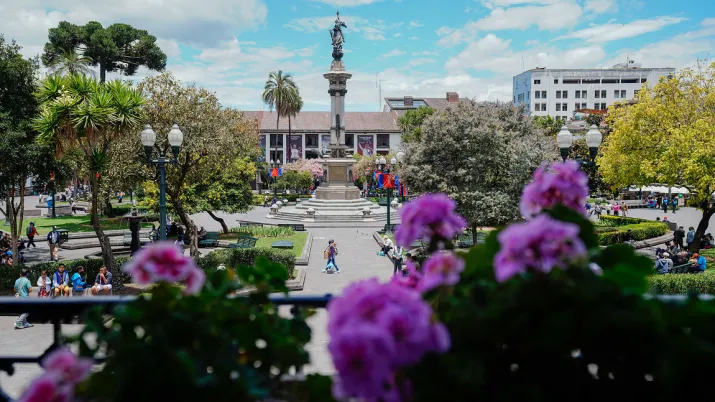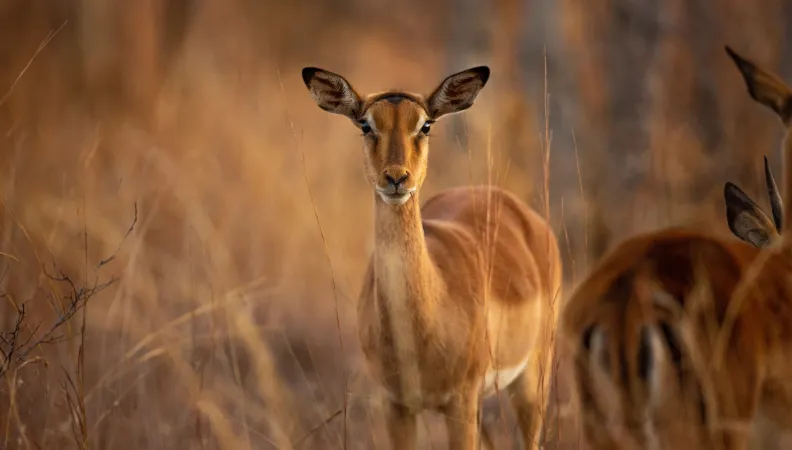 The ECOPRONAT programme explores the levers for mainstreaming biodiversity into different economic sectors. As part of this research programme, AFD is working with the South African National Biodiversity Institute (SANBI) to connect agricultural and ecosystem conservation issues in an innovative way, by studying the business models of wildlife ranches as well as the levers for developing wildlife economy.
The ECOPRONAT programme explores the levers for mainstreaming biodiversity into different economic sectors. As part of this research programme, AFD is working with the South African National Biodiversity Institute (SANBI) to connect agricultural and ecosystem conservation issues in an innovative way, by studying the business models of wildlife ranches as well as the levers for developing wildlife economy.
Context
South Africa’s Department of Agriculture, Land Reform and Rural Development assists persons (or their descendants) who were excluded the formal agriculture economy on the basis of their skin colour, and who have recently begun to engage in farming with the support and assistance of the State. This broad policy is implemented through the Land Reform Programme, where Recapitalisation and Development funding (Recap) is used to help land reform beneficiaries establish viable enterprises. However, this programme remains focused on traditional models of crop and livestock systems.
The consortium of researchers assembled by the South African National Bioinformatics Institute (SANBI) argues that the Land Reform Programme would benefit from integrating the ecosystem services paradigm to help reduce inequality and understand the benefits of land transfer more holistically (Clements et al. 2021). This research consortium is working to integrate wildlife economy enterprise development within the Recap scope of investment.
More specifically, the research project focuses on wildlife ranching, which can be defined as the breeding and commercial use of wild animals for hunting, game meat production, live animal trading or ecotourism. This economic activity can be an interface between conservation and agriculture but, although anchored for many years in South Africa, it remains little studied. Decision-makers thus lack data on the functioning of this wildlife economy as well as its socio-economic and environmental impacts.
Developing knowledge and decision support tools on this wildlife economy with the support of the ECOPRONAT programme is therefore an opportunity for better management of agricultural land and natural ecosystems, for the benefit of beneficiaries of the Land Reform Programme. The survey methodology and lessons learned in South Africa will be used for exchanges with Kenyan authorities who are also conducting studies on the role of wildlife economy in that country.
This project is part of the ECOPRONAT research programme, which supports research on how to better take into account biodiversity and mainstream it into key economic sectors.
Objectives
This project aims to support the development of agricultural policies in Africa that are sustainable on the long-term, and to develop wildlife economy research in South Africa and Kenya. Through its work, the research consortium aims to produce knowledge and tools to enable a large-scale transition, going from a land use that degrades ecosystems to profitable wildlife enterprises that restore natural capital, create jobs and catalyze investment to expand conservation areas.
To this end, the project aims to:
- Develop foundational knowledge for the wildlife economy to facilitate its mainstreaming into agricultural and biodiversity public policies (production of data on business models, their viability, investment and skills development needs, etc.);
- Co-produce decision support tools that enable local actors, companies and public authorities to adapt their policies and investments and create a systemic impact;
- Create a regional community of practice to strengthen research capacity in the South and the development of the wildlife economy. Two master’s students are involved in this project, led by SANBI in partnership with the South African Universities of Rhodes, Stellenbosch and Nelson Mandela.
Method
This research project is based on participatory knowledge building (including training workshops) and on the development of survey methods to collect social, economic and ecological data. This information will be used to produce decision-support tools. In particular, a geospatial selection tool will be developed to identify the actions and investments to be undertaken.
The methodology consists of collecting data from the established wildlife ranching industries established in South Africa and Kenya, on the contributions of the wildlife industry to biodiversity, land restoration and socio-economic development. Through statistical analysis and data visualization, the team will convert this information into knowledge products to make it more accessible, and then into decision support tools to assist new and emerging farmers to create businesses in the wildlife economy and thus expand the wildlife ranching estate.
Results
The research team has published academic articles on the functioning of the wildlife economy and its socio-economic and environmental impacts:
- Clements, H.S., Child, M.F., Lindeque, L. et al. Lessons from COVID-19 for wildlife ranching in a changing world, Nature Sustainability 5, 1040–1048 (2022).
- Denner, C., Clements, H. S., Child, M. F., & De Vos, A. (2024). The diverse socioeconomic contributions of wildlife ranching, Conservation Science and Practice, 6(7), e13166.
The team collaborated with public authorities to ensure that this information could be used by local stakeholders. Their data, gathered from surveys with a representative sample of wildlife ranchers, fed into fact sheets on the wildlife economy published by South Africa’s Department of Forestry, Fisheries and the Environment (DFFE). These are available on the Biodiversity Sector Investment platform, which aims to inform South African citizens and investors interested in engaging in this type of activity.
The research has also informed local decision-making, notably in the revision of the National Biodiversity Economy Strategy and related debates on the sustainable use of biodiversity for economic purposes.
Finally, the team shared its findings with a broader audience through The Conversation Africa, analyzing how different wildlife use models can contribute to local development and the inclusion of disadvantaged communities.
Lessons learned
Several findings have emerged from this research project:
Researchers have demonstrated that wildlife-based land uses support higher biodiversity levels, citing a number of scientific studies that assess their impact in South Africa and other southern African countries. Some of these studies show that wildlife ranching can support higher densities of wild animals per hectare than conventional agriculture or livestock farming.
- Shumba, T., De Vos, A., Biggs, R., et al. (2020). Effectiveness of private land conservation areas in maintaining natural land cover and biodiversity intactness. Global Ecology and Conservation, 22, e00935.
- Taylor, W. A., Child, M. F., Lindsey, P. A., et al. (2021). South Africa’s private wildlife ranches protect globally significant populations of wild ungulates. Biodiversity and Conservation, 30(13), 4111–4135.
- Saayman, M., van der Merwe, P., & Saayman, A. (2018). The economic impact of trophy hunting in the South African wildlife industry. Global Ecology and Conservation, 16, e00510.
- Lindsey, P. A., Romanach, S. S., & Davies‐Mostert, H. T. (2009). The importance of conservancies for enhancing the value of game ranch land for large mammal conservation in southern Africa. Journal of Zoology, 277(2), 99–105.
The research team identified six primary wildlife ranching business models in South Africa, and assessed their employment potential, profitability, and socio-economic impacts:
- Three specialized models: ecotourism; trophy hunting; wildlife breeding
- Three mixed models: mixed hunting (meat and trophy); wildlife breeding combined with agriculture; trophy hunting combined with game meat production
Specialized models, particularly trophy hunting and ecotourism, tend to be more profitable and generate more high-quality jobs than mixed-use or production-focused models (e.g., game meat hunting or livestock farming):
- Employment: Ecotourism ranches employ more people per hectare and offer more skilled jobs and opportunities for women than conventional agriculture or mixed models. Trophy hunting ranches rank second in employment per hectare, although roughly one-third of these jobs are seasonal. Both models offer significant non-wage benefits to employees.
- Profitability: Trophy hunting is the most profitable model, with a median profit margin of 33%. Wildlife breeding is less profitable and contributes less to employment compared to the other two specialized models.
However, specialized models proved to be far less resilient during crises such as the COVID-19 pandemic. In contrast, mixed models—though less profitable—showed greater resilience. The volatility of the hunting and tourism sectors highlights the need for long-term studies and targeted public policy.
In general, ranches focused on ecotourism and trophy hunting stimulate local economies:
- Due to higher operating costs, they purchase more goods and services locally and support a broader ecosystem of businesses.
- They employ more women and offer better wages than conventional agriculture. For instance, in ecotourism-focused ranches, over 40% of staff are women.
- While concerns about job precarity exist, most positions are permanent—except in trophy hunting, where seasonal work is more common. Higher wages and more stable jobs help reduce economic vulnerability.
However, specialized models require large tracts of land and substantial infrastructure, which can be a barrier to entry for disadvantaged South Africans. Conversely, more accessible mixed models may enhance social inclusion and offer historically marginalized groups opportunities to participate in a wildlife economy that also supports biodiversity better than conventional farming systems.
The researchers recommend that policymakers recognize the diversity of wildlife ranching models in order to better integrate them into conservation and sustainable development strategies.
Research Papers
Contact
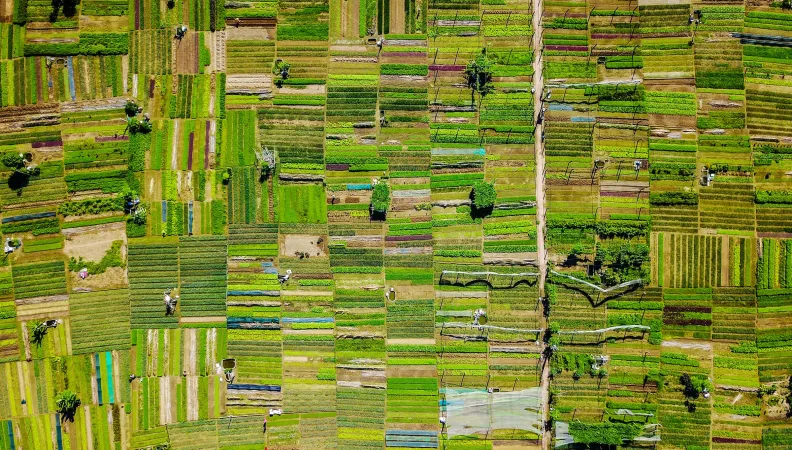 As part of the ECOPRONAT research program, AFD is seeking to develop new applications of the ESGAP framework, a methodology for assessing environmental sustainability at the scale of a territory. Focusing on Vietnam, where the ESGAP framework was recently tested, this research project aims to assess the physical risks associated with certain economic activities, based on scenarios of environmental pressures.
As part of the ECOPRONAT research program, AFD is seeking to develop new applications of the ESGAP framework, a methodology for assessing environmental sustainability at the scale of a territory. Focusing on Vietnam, where the ESGAP framework was recently tested, this research project aims to assess the physical risks associated with certain economic activities, based on scenarios of environmental pressures.
Context
Public actors need to monitor the state of the environment in order to assess the effectiveness of their actions, prioritize management policies and measures, and thus objectively establish their contribution to the conservation of natural capital. To do so, they must be able to rely on science-based standards to identify the thresholds at which environmental functions can be considered sustainable.
The ESGAP (Environmental Sustainability Gap) is an innovative tool for assessing the condition of a territory’s environmental functions and how sustainable they are. For all critical components of natural capital in the territory concerned (air or water quality, pollution, forest resources, fisheries, etc.), this indicator calculates the difference between their current state and a state that would be sustainable (i.e., a state compatible with the sustainable functioning of the processes necessary for the preservation of life, human activities and well-being). This allows for the calculation of the “environmental sustainability gap”, which highlights the path to environmental sustainability. This can then serve as a guide for public policies to estimate and preserve the critical functions of the natural capital of a given territory. ESGAP has already been tested in New Caledonia, Kenya and Vietnam.
Within the framework of the ECOPRONAT research programme, AFD aims to develop methodologies for assessing strong sustainability, that is, adopting demanding criteria concerning the non-substituability of natural capital by other forms of capital (physical among others) in a territory or country. AFD also wants to promote their use in international frameworks and contribute to emerging international standards on the good ecological state of ecosystems.
Find out more about ECOPRONAT
Goal
The ESGAP pilot project recently conducted in Vietnam made it possible to measure the state of the environmental functions of this country. It identified fisheries resources, soil erosion, air and water pollution as the most degraded dimensions.
It appears that some economic activities can put pressure on these different environmental functions, while other activities depend on their proper functioning. Developing the ESGAP framework is necessary to go further, by integrating the linkages that exist between the economy and the environment and identifying which human activities are concerned.
In order to do this, the research team will try to link ESGAP measures to socio-economic activities and build a monetary ESGAP. The aim will be to assess the physical risks associated with certain economic activities on the basis of scenarios of environmental pressures (such as the breakdown of supply of certain essential environmental services, for example in agriculture). The development of these new applications of the ESGAP framework aims to guide policy makers in designing more sustainable development paths.
Method
The research project will be conducted in two phases:
- The first step will consist in building a “monetary” ESGAP that measures the cost (expressed in monetary units) needed to achieve a sustainable environmental state. This cost is considered an unpaid ecological debt: it corresponds to the cost of effective measures that society would have to spend to achieve a good ecological state. It will be calculated as an abatement cost, that is, the expenditure necessary for human activities (such as production and consumption) in Vietnam to reduce their environmental pressures to a level that does not result in degradation of natural capital (or to an acceptable level, considering the good condition standards considered by the ESGAP).
- The second phase will use the modeling framework developed in the first phase, and assess how different public policies can improve Vietnam’s environmental sustainability by 2035, as well as mitigate the economic risks associated with the loss of the country’s natural capital. First, the team will develop scenarios to determine which interventions can improve Vietnam’s ecological status. Secondly, it will assess the extent to which economic risks related to biodiversity (due to the dependence of the Vietnamese economy on ecosystem services) can be mitigated through these interventions.
Since this study is considered experimental research, the different elements outlined in the research proposal and intermediate results may be adjusted throughout the study based on different factors – such as access to data, data quality, difficulties in implementing certain aspects of the methodology, or unsustainable or misleading results.
Results
The team will produce a synthesis of the study, that will be used as a working document for communication purposes. The final deliverable will outline the methodology, database used and main results of the monetary ESGAP applied in Vietnam and the physical risk assessment methodology for the Vietnamese economy. This final deliverable will explore the relevance of ESGAP for the implementation of public policies aimed at achieving a good state of environmental conditions and future research pathways to link ESGAP measures to socio-economic activities.
Contact:
- Oskar Lecuyer, research officer, AFD
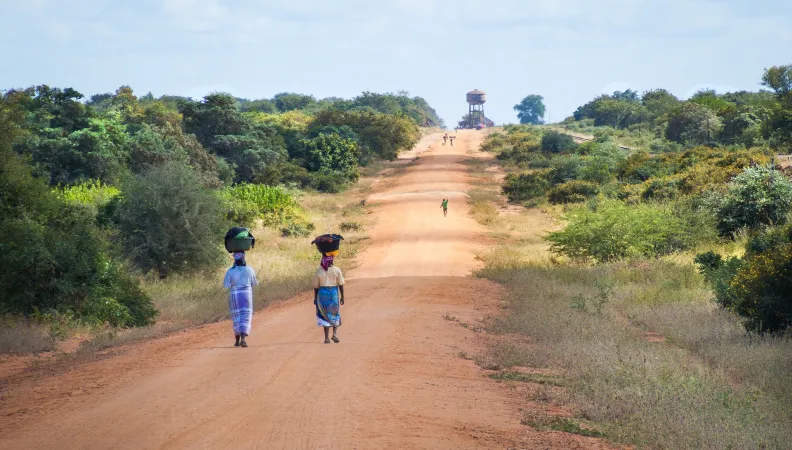 As part of the ECOPRONAT research programme, AFD is supporting the FARSYMABI project (A Farming System Approach to Mainstreaming Biodiversity in the agricultural sector) in Mozambique. Through the identification of different farming system approaches and their effects on poverty alleviation, food production and biodiversity conservation, this research project aims at facilitating the design of national agricultural policies that mainstream biodiversity, taking into account the local context and successful interventions.
As part of the ECOPRONAT research programme, AFD is supporting the FARSYMABI project (A Farming System Approach to Mainstreaming Biodiversity in the agricultural sector) in Mozambique. Through the identification of different farming system approaches and their effects on poverty alleviation, food production and biodiversity conservation, this research project aims at facilitating the design of national agricultural policies that mainstream biodiversity, taking into account the local context and successful interventions.
Context
The relationship between the biodiversity crisis and agriculture is complex. On the one hand, the expansion of agricultural systems and conventional agricultural practices threaten biodiversity; on the other hand, agricultural production is dependent on biodiversity and the ecosystem services it provides.
In Mozambique, tensions between poverty reduction targets and biodiversity protection are high. The expansion of small farms leads to the fragmentation of natural ecosystems and it represents one of the main sources of biodiversity destruction for the country. One of Mozambique’s responses to this fragmentation is to save the clearing of new land through a more intensive use of inputs, clearly separating land for nature protection from land for productive agriculture.
The reconciliation of agricultural development and conservation through the use of agricultural techniques respectful of biodiversity is now essential to ensure the sustainability of agricultural systems and secure the food supply of the population.
This project is part of the ECOPRONAT research programme, which supports research on how to better take into account biodiversity and mainstream it into key economic sectors.
Objectives
This research project aims to understand the possible trade-offs and complementarities between poverty reduction, food security and biodiversity in the context of developing countries, where farmland expansion is a major threat to biodiversity. This research will help understand how local landscape/community units function, how they impact biodiversity and its ecosystem services and how they benefit from them.
This knowledge will make it possible to identify the levers to mainstream biodiversity into the agricultural sector. This project also aims to demonstrate the need to create a link between the national policy framework regarding the mainstreaming of biodiversity into agriculture, and the socio-ecological context of successful local interventions.
The project involves a multidisciplinary team of ten Portuguese and Mozambican researchers: two from Observatório do Meio Rural (OMR), two from Eduardo Mondlane University, one from Lúrio University and five from the Instituto Superior de Agronomia in Lisbon (including a doctoral student). In addition, eighteen people (researchers and students) are involved in data collection activities.
Method
The methodological approach is divided into three steps:
- Priorities, analysis and mapping at the country level: carried out at national level, with the aim of producing a broad, national picture of the effects of farming systems on poverty reduction, food security and biodiversity conservation; as well as an understanding of the conflicts and complementarities between these objectives.
- Priorities, analysis and research into local context-sensitive interventions: carried out at the local level, through five case studies, covering the main socio-ecological gradients of Mozambique that should be considered when developing a national strategy to mainstream biodiversity into agricultural policies.
- Link between local initiatives and the national framework for the mainstreaming of biodiversity in agriculture: aims to integrate the results of the first and second steps, to help the mainstreaming of biodiversity in agricultural policy, addressing the conflicting relationships and complementarities between the objectives of poverty, food security and biodiversity.
This research project mobilizes different scientific disciplines in a transdisciplinary way, such as socioeconomics of agriculture, ecology, agronomy or sustainability sciences. This work will result in the production of a mapping of regions characterized by similar biophysical and socio-economic conditions, composition of agricultural systems, landscape mosaic, and levels of poverty, food insecurity, and biodiversity.
Stakeholders (decision-makers and contributors to public policies at the central level, farmers' organizations, environmental protection organizations, local actors) are also mobilized throughout the research work and their knowledge, perceptions and preferences incorporated into the analyses produced. This involvement of stakeholders aims to co-construct policies for mainstreaming biodiversity in agriculture.
Expected results
The main expected results of this project are:
- Production of a policy paper presenting the regional reference framework (socio-ecologically homogenous regions) and guidelines for mainstreaming biodiversity in each region;
- Assessment of the transferability of local success interventions within and across regions;
- Identification of the necessary political conditions at the national level for the implementation of local interventions;
- Comparative evaluation of different policy tools;
- Development of a simulation tool based on a farming system approach, that will allow policy makers to assess ex ante the impacts of alternative policies on the objectives of poverty reduction, and food security and biodiversity and ecosystem services improvement.
Lessons learned
The production of cartographic data at the local level contributes to the development of agricultural and land use policies at the national level. Moreover, the cross-referencing of these local data with participatory approaches (organization of workshops with producers and sharing of public policy options) contributes to the development of more transversal policies.
The project contributed to the training of local young students and technicians in applying surveys using tablets and using the Open Data Kit program. The project contributed to the exchange of knowledge between the researchers members of the project and the fieldwork guides regarding the identification of birds and vegetation species.
Find out more about the project's results: farsymabi.webnode.pt
Contact
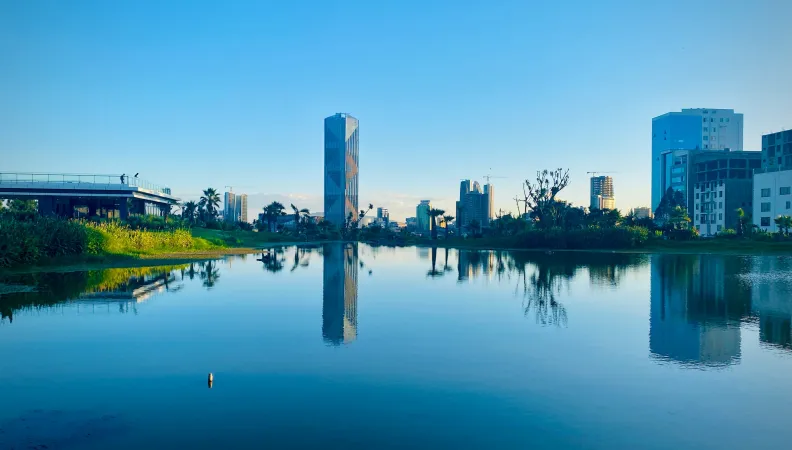 As part of the ECOPRONAT research programme, AFD is collaborating with the World Resources Institute (WRI) to develop a strategic framework for identifying and deploying nature-based solutions (NBS) in urban areas, taking Addis Ababa (Ethiopia) and Kigali (Rwanda) as case studies. Natural ecosystems and biodiversity are indeed essential to ensure the livability of cities, especially in the face of climate change and its impacts. Their integration into urban planning processes is also essential.
As part of the ECOPRONAT research programme, AFD is collaborating with the World Resources Institute (WRI) to develop a strategic framework for identifying and deploying nature-based solutions (NBS) in urban areas, taking Addis Ababa (Ethiopia) and Kigali (Rwanda) as case studies. Natural ecosystems and biodiversity are indeed essential to ensure the livability of cities, especially in the face of climate change and its impacts. Their integration into urban planning processes is also essential.
Context
According to a 2021 OECD report, two-thirds of African cities are at “extreme” risk of climate and water-related shocks. Violent climate events, heat waves and droughts are thus at the top of the risks incurred by urban areas. Rapid urbanization, unsustainable development and degradation of natural ecosystems exacerbate these risks.
Nature-based solutions (NBS), which rely on natural ecosystems and the services they provide to human activities, address these urban challenges, while simultaneously providing benefits in terms of human well-being and biodiversity. However, they are still little integrated into urban planning processes and decision support tools available to planners. The lack of knowledge, data and experimentation on nature-based solutions therefore hampers their adoption and deployment.
This project is part of the ECOPRONAT research programme, which supports research on how to better take into account biodiversity and mainstream it into key economic sectors.
Objectives
The objective of this research project is to enable, through the construction of a strategic framework, the deployment and scaling of nature-based solutions, in particular to address water and heat risks. The challenge is to improve the ecological resilience of cities by helping them identify the risks they must prepare for, to assess the potential of NBS to address them and to develop implementation and funding strategies for these NBS as part of the urban planning process.
A fast, effective and practical methodology for assessing the potential of nature-based solutions will be made available to the cities of Addis Ababa and Kigali, which are the two pilot cities of this research project. The project is led by WRI, in partnership with the Addis Ababa Urban Development Department, the Ethiopian Institute of Architecture and the Rwanda Young Water Professionals Association. This methodology is intended to be adopted by other urban centers to allow a broader appropriation and mobilization of NBS in cities.
Method
At the methodological level, the construction of a strategic framework for nature-based solutions is interesting for two reasons:
- Identification of flood risks, heat islands, water supply and biodiversity potential of cities through the production of composite maps and the mobilization of satellite data;
- Participatory construction of the strategic framework through workshops with stakeholders of both cities to validate the priority areas of intervention and identify the NBS most adapted to the issues of each area.
Results
Developed by the WRI research team with the cities of Addis Ababa and Kigali, the Strategic NbS Framework can support cities in selecting and implementing appropriate nature-based solutions (NbS).
By integrating globally available data sets with local data, it helps identify areas of a given city that are susceptible to extreme flooding and heat, as well as opportunities to expand urban green spaces and create ecological corridors.
To ensure successful implementation, collaboration between public authorities, technical experts, and community leaders is essential. Using this framework, citywide maps can be quickly generated to identify priority areas. After a validation by city stakeholders, field experts then play a key role in designing effective NbS, tailored to local conditions.
Although it has limitations in data detail, the Framework provides a solid starting point to build sustainable cities. Additional guidelines provide technical information on usable NbS, as well as case studies. These guidelines are available for download below:
A webinar from the Research Conversations series was held to present the project's findings, and these research findings are summarized in a policy brief available for download below.
Research findings
The research project identified a series of lessons to facilitate the deployment of nature-based solutions (NbS), taking into account the specific needs of cities. These lessons highlight the potential of nature in urban resilience planning and climate action:
- To increase awareness and institutional integration:
- Set up multi-stakeholder processes to support dialogue and the prioritization of identified NbS.
- Rely on case studies to facilitate understanding and engagement.
- To enhance data availability for more effective planning:
- Combine local and global datasets to carry out multi-hazard assessments (flooding, urban heat islands, etc.).
- Encourage citizen science initiatives for data collection, and ensure it is considered in decision-making.
- To strengthen planning and implementation linkages:
- Establish dedicated governance structures (such as a mayoral committee) to coordinate various technical services involved and mobilize funding.
- Develop common reference frameworks (design standards, guidelines, etc.) to strengthen political and public support.
- To secure long-term financing:
- Integrate NbS into existing city investment programs.
- Include strategies for public-private partnerships and use a multi-benefit assessment framework to demonstrate their long-term value.
- To adapt solutions to the local context and ensure monitoring:
- Launch NbS pilot projects with monitoring systems to track their performance.
- Integrate gender, equity, and inclusion considerations from the selection phase of each NbS.
Learn more
Other projects on Nature-based Solutions supported by ECOPRONAT

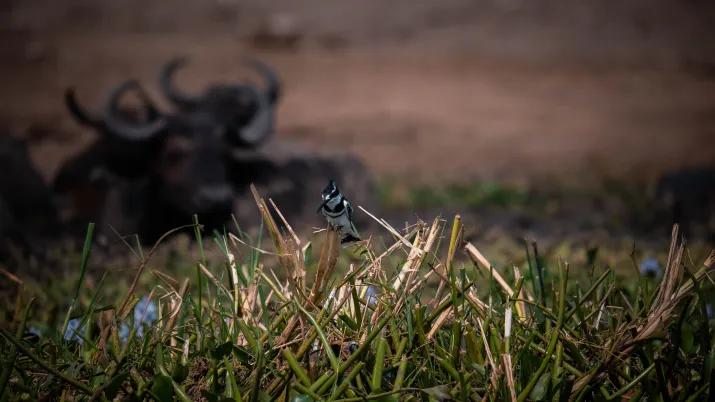
Contact
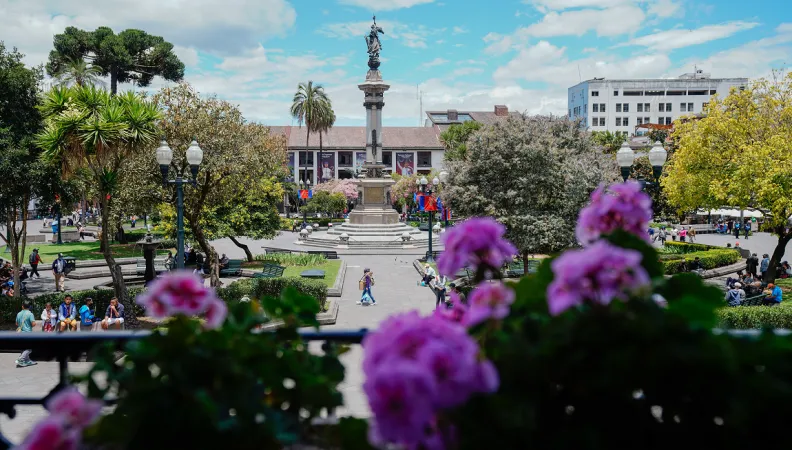 As part of the ENSLAC project, AFD is working with Yes Innovation and its partners to study and identify replicability levers for nature-based solutions in three South American countries – Ecuador, Colombia and Peru. Fifteen initiatives are analyzed in order to understand how natural ecosystems are mobilized in urban areas, what are their impacts and how nature-based solutions (NBS) could be more widely integrated into spatial and urban planning.
As part of the ENSLAC project, AFD is working with Yes Innovation and its partners to study and identify replicability levers for nature-based solutions in three South American countries – Ecuador, Colombia and Peru. Fifteen initiatives are analyzed in order to understand how natural ecosystems are mobilized in urban areas, what are their impacts and how nature-based solutions (NBS) could be more widely integrated into spatial and urban planning.
Context
Latin America is the second most urbanized region in the world, with 81% of its population concentrated there. This strong urbanization, its rapid growth and the weakness of urban planning policies affect areas of high ecological and environmental value. However, natural ecosystems can be a source of solutions for those involved in urban design and development, in particular to respond to the risks generated or exacerbated by climate change.
Understanding nature-based solutions (NBS), studying their implementation conditions and analyzing their integration into public policies is therefore necessary to ensure the livability of cities in the long term. While NBS and green infrastructure are still recent in the urban landscape, initiatives have been deployed for several years and are a privileged source of data to exploit.
This project is part of the ECOPRONAT research programme, which supports research on how to better take into account biodiversity and mainstream it into key economic sectors.
Objectives
The ENSLAC (Enabling Nature based solutions Scale-up in Latin American Cities) project aims to analyse the mechanisms that enable the scale-up of nature-based solutions implementation in Latin American cities, drawing on 15 case studies in Peru, Colombia and Ecuador. This research approach aims to:
- Analyze the challenges of ecological restoration for the management of risks related to the impacts of climate change in urban areas;
- Understand the levers for using NBS as a tool for urban planning and development;
- Identify the temporal, technical, cultural, political, social, financial and cooperative processes that have enabled large-scale NBS-based projects;
- Assess the influence of national or supranational strategies and policies on NBS development;
- Disseminate the knowledge produced by focusing on formats and channels that can be used for the training of urban development actors.
To explore these issues, Yes Innovation, based in Quito, works with the Humboldt Institute for Biological Resources Research, an institution linked to the Ministry of the Environment of Colombia, and Periferia Territorios Vivos, a Peruvian organization specialized in urban planning with an ecological approach.
Method
This research project uses two analytical tools (depending on the case study and the available field data):
- Temporal and spatial analysis (known as BA/CI, which refers to a Before/After and Conservation/Intervention analysis);
- Comparative analysis between case studies on NBS and reference cases of comparable characteristics but without implementation of NBS.
Results
The ENSLAC research project aims to:
- Understand mechanisms that enable scale-up of nature-based solutions as a tool for urban and peri-urban planning;
- Identify replicability levers of these NBS for Latin American cities;
- Produce training materials for urban development actors.
The research team presented its findings during a webinar from the Research Conversations series. The replay is available below (in French and Spanish).
Find out more
Other projects on Nature-based Solutions supported by ECOPRONAT


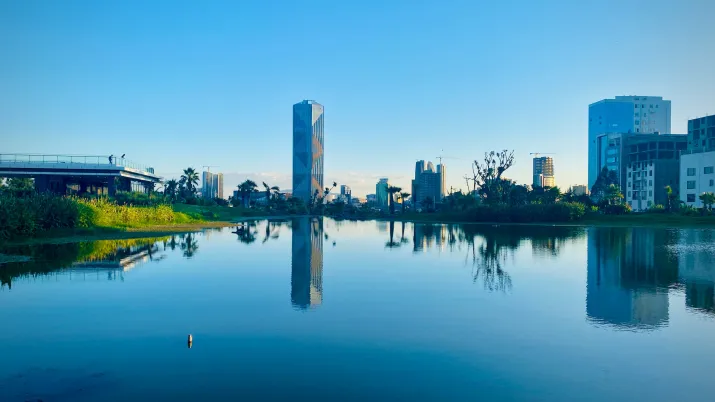
Contact
 Brazil is one of the 60 countries followed by AFD’s country-risk economists, whose assessments shed light on countries' economic trajectory and macroeconomic and financial situation.
Brazil is one of the 60 countries followed by AFD’s country-risk economists, whose assessments shed light on countries' economic trajectory and macroeconomic and financial situation.
Context
In line with the international agenda on sustainable development and combating climate change, AFD is supporting Brazil on its path towards low-carbon, resilient and equitable development, leveraging its financial instruments to support regional development players.
Goal
Produced by AFD's team of country-risk economists, country assessments provide an analysis of development processes in countries in which AFD operates. They also characterize their growth trajectory, and detect economic, social, political and financial vulnerabilities associated with these trajectories. AFD Group is thus in a position to properly measure the challenges and monitor the risks associated with each of its investments.
Emphasis is placed on developing countries, particularly in Africa, for which macroeconomic analyses are rare or infrequent. AFD seeks to complement existing production on the global economic situation, more focused on advanced economies and major emerging countries.
Find out more: Macroeconomic analyses at AFD
Method
Country-risk analysis is based on a close follow-up over a long period of time and rooted in a fine knowledge of local contexts. Cyclical trends, often highlighted in the news, are always examined in the light of structural trends and of the regional context in which they take place. The aim is to highlight country-specific macroeconomic issues while assessing risks against comparable time- and space-based trajectories.
Country-risk economists place the study of socio-political vulnerabilities, the growth model, the viability of public debt, external balances and the soundness of the financial system at the heart of their assessment, and give specific attention to countries' exposure to climate risks.
Lessons learned
Our publications on Brazil's macroeconomic situation:
- "Brazil: Beware of own goals", in MacroDev Semestrial Panorama n°44 (July 2023)
- "Brazil: a short-lived lull", in MacroDev Semestrial Panorama n°41 (February 2022)
- "Où en est l’économie brésilienne ?" (April 2014, in French)
Contact:
- Maxime Terrieux, country-risk economist at AFD

